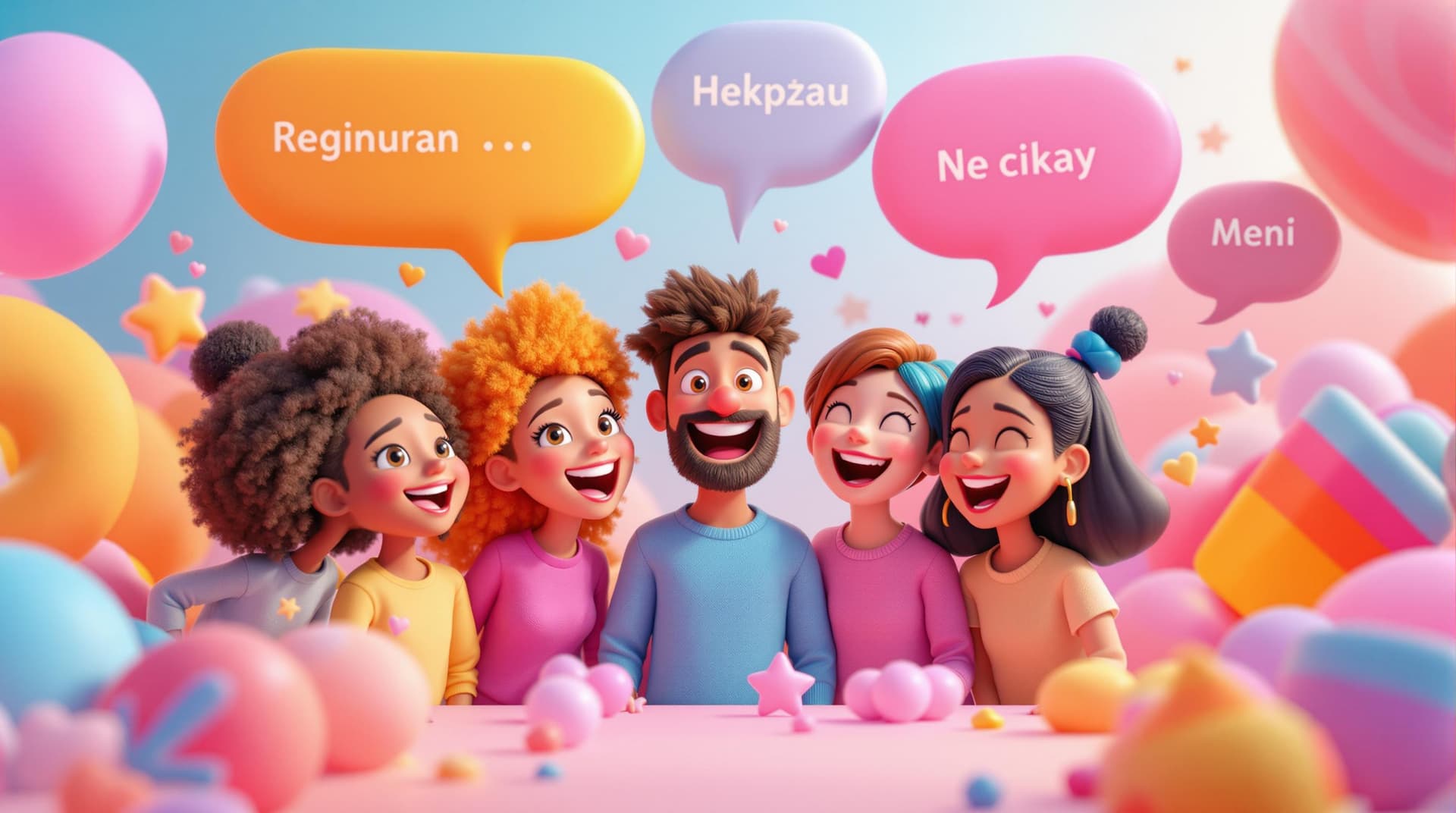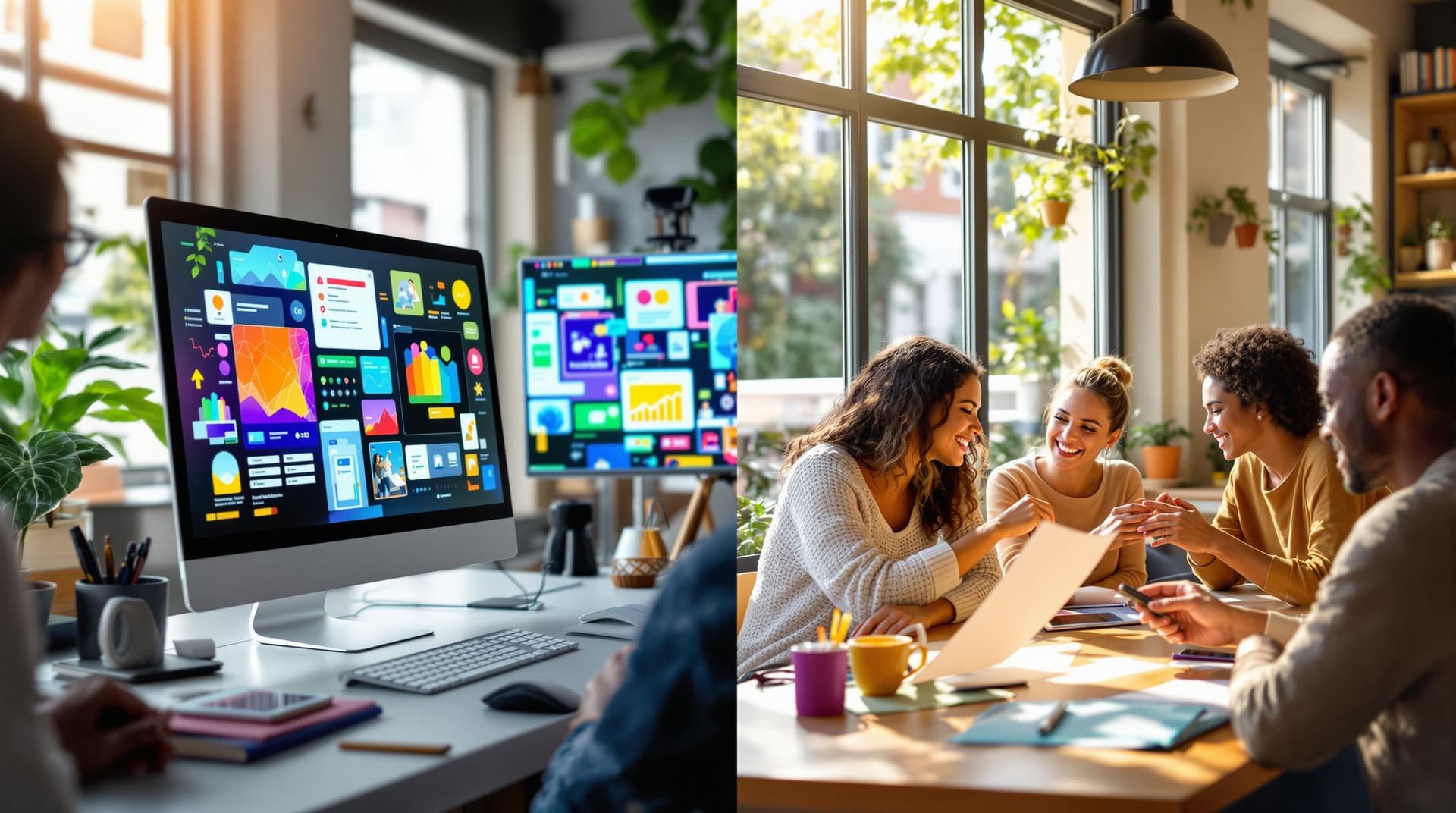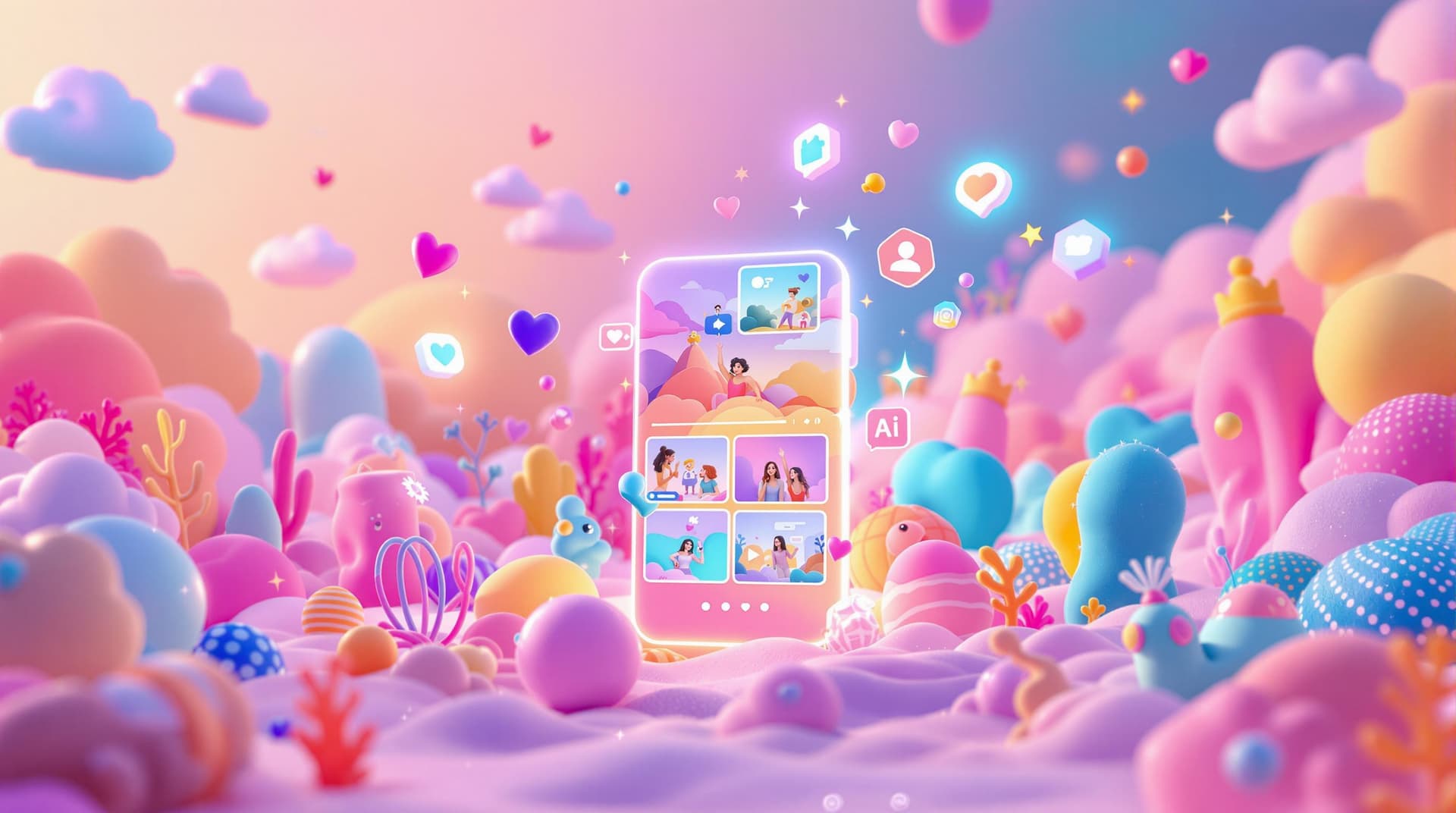Table of contents

Creating multi-language UGC (User-Generated Content) videos helps businesses connect with global audiences, improve conversions, and reduce costs. Here's how you can do it effectively:
-
Set Clear Goals and Use the Right Tools
Research your target audience, define objectives, and use AI tools like Smartcat for translations and Maestra.ai for voiceovers. -
Build a Base Video
Write simple, clear scripts, use AI for video creation, and apply consistent branding. -
Translate and Localize
Use AI tools for accurate translations, add natural-sounding voiceovers, and ensure cultural relevance with human reviews. -
Adapt Videos for Platforms
Customize video formats, captions, and hashtags for platforms like Instagram, TikTok, and YouTube Shorts. -
Measure and Improve
Track metrics like engagement, retention, and conversions. Use feedback to refine and scale your strategy.
Quick Comparison of AI Tools for Video Creation:
| Tool | Key Features | Best For |
|---|---|---|
| MagicUGC | AI-optimized scripts, branding | Creating base videos |
| Smartcat | Translation, custom glossaries | Accurate translations |
| Maestra.ai | Voice cloning, subtitles | Natural voiceovers and subtitles |
How to Translate UGC Creatives Using AI Tools
Step 1: Set Your Video Goals and Tools
Start by defining clear objectives, understanding your audience, and picking the right tools. This step helps you use AI tools and audience insights effectively to connect with global markets.
Research Your Target Markets
Create detailed audience profiles by considering these key factors:
| Market Factor | Key Considerations | Impact on Content |
|---|---|---|
| Language Preferences | Primary and secondary languages | Influences script complexity and dialects |
| Cultural Context | Local customs and sensitivities | Shapes visuals and messaging tone |
| Digital Behavior | Platform usage and viewing habits | Determines video length and format |
| Purchase Patterns | Shopping preferences | Guides your call-to-action approach |
Select Multi-Language Video Tools
Equip yourself with tools that simplify localization:
| Tool Type | Recommended Platform | Key Capability |
|---|---|---|
| Video Creation | MagicUGC | AI-optimized scripts and brand-specific options |
| Translation | Smartcat | Translation with over 95% accuracy and faster workflows |
| Voice/Audio | Maestra.ai | Supports 125+ languages with natural-sounding AI voices |
Define Success Metrics
Set measurable goals that align with your global and regional objectives. Focus on metrics like engagement rates, view counts, conversion rates, and audience retention. For instance, you could aim to boost engagement by a certain percentage within a specific timeframe. Adjust these benchmarks based on market conditions and track them regularly to ensure your strategy stays effective.
With your goals set and tools ready, you're prepared to move on to creating your base video in Step 2.
Step 2: Build Your Base Video
Create a solid base video to serve as the template for all language versions. This approach saves both time and effort.
Write Clear, Simple Scripts
The script is the backbone of your video, so it needs to be straightforward and easy to understand. Here's how to craft an effective script:
| Script Element | Best Practice | Why It Matters |
|---|---|---|
| Sentence Structure | Keep sentences under 15 words | Makes translation easier and improves clarity |
| Language Choice | Avoid idioms and colloquialisms | Ensures meaning stays clear across cultures |
| Message Flow | Use linear storytelling | Promotes consistent understanding worldwide |
| Cultural Elements | Stick to universal references | Reduces the risk of cultural confusion |
Generate AI Video Content
AI tools like VidAU.AI and MakeUGC make creating video content faster and easier while maintaining a professional look. Keep these tips in mind:
| Feature | Best Practice | Impact |
|---|---|---|
| Avatar Selection | Choose neutral avatars | Appeals to a wide range of audiences |
| Voice Quality | Use clear, steady speech | Improves AI translation accuracy |
| Video Length | Limit videos to 60 seconds | Fits social media platform requirements |
Apply Brand Guidelines
Consistency is key when it comes to branding. Make sure to:
- Use the same colors and fonts across all language versions.
- Keep your logo placement consistent, even when adapting to different text directions.
- Choose background music that works well across various cultural preferences.
Once your base video is finalized, you're ready to adapt it for multiple languages.
sbb-itb-d822133
Step 3: Convert Videos to Multiple Languages
Once your base video is ready, the next step is transforming it into different languages. AI tools can make this process faster and more accurate while maintaining the tone and message.
Translate with AI Tools
Picking the right AI translation software is crucial for accurate video localization. Tools like Smartcat and Maestra are tailored for translating user-generated content (UGC) videos. Here's a quick comparison:
| Feature | Smartcat | Maestra |
|---|---|---|
| Language Support | Works with many languages | Works with many languages |
| Integration Options | API and direct upload | Comes with a built-in editor |
| Special Features | Custom glossaries | Auto-subtitling, voice cloning |
Simply upload your video script for automated translation. For example, MagicUGC's Pro Plan ($179/month) can create brand-aligned video variations automatically.
Add Language-Specific Audio
To ensure top-notch audio in multiple languages, focus on clear subtitles and natural-sounding voiceovers. Here's how to handle each component:
| Component | Best Practice | Tool Recommendation |
|---|---|---|
| Subtitles | Auto-generate and sync with timing | Maestra's auto-subtitling tool |
| Voiceovers | Use AI for natural-sounding voices | Maestra's voice cloning feature |
| Audio Mixing | Keep sound levels balanced | Built-in audio equalizers |
Check Translation Quality
Even with AI, human oversight is critical for high-quality translations. Use this step-by-step process:
- Initial Review: Have native speakers review translations for accuracy and cultural nuances.
- Technical Verification: Check subtitle timing to ensure it aligns with speech patterns.
- Brand Consistency: Confirm that the terminology matches your brand's established glossary.
Step 4: Format Videos for Social Platforms
To get the most out of your videos, they need to match the technical standards and styles of each platform. After creating localized versions in Step 3, it's time to fine-tune them for specific platforms.
Match Platform Requirements
Each platform has its own set of technical guidelines. Here's a quick reference:
| Platform | Video Length | Resolution | Aspect Ratio |
|---|---|---|---|
| Instagram Reels | 90 seconds | 1080p | 9:16 |
| TikTok | 10 minutes | 1080p | 9:16 or 1:1 |
| YouTube Shorts | 60 seconds | 1080p | 9:16 |
Using tools like MagicUGC's Pro Plan ($179/month) can save you time by automatically adjusting your videos to meet these specs. Its AI ensures videos are properly compressed without losing quality. Once the technical setup is handled, focus on customizing the text for each platform.
Write Platform-Specific Text
Tailor captions and descriptions to suit the tone and audience of each platform. For example:
- Instagram: Longer, storytelling-style captions work well here.
- YouTube Shorts: Keep it short and to the point.
- TikTok: Use a mix of casual language and trending hashtags.
Also, tweak hashtags to match local trends. For instance, swap #fashion for #moda when targeting Spanish-speaking users.
Add Engagement Elements
To make your videos more interactive, include native features that encourage audience participation. Coca-Cola's 2022 multi-language campaign saw a 25% boost in engagement by adding localized elements. Think about using:
- Interactive polls
- Calls-to-action tailored to specific cultures
- On-screen text animations in multiple languages
MagicUGC's Turbo Plan can help automate these features while keeping your branding consistent across platforms.
Step 5: Measure Results and Grow
Evaluate your results and fine-tune your approach to keep improving your content.
Check Performance Data
An analytics dashboard is essential for tracking key metrics. Pay attention to these critical areas:
| Metric Type | What to Track | Why It Matters |
|---|---|---|
| Engagement | Likes, comments, shares | Reflects how well your audience connects with your content. |
| Retention | Watch time, drop-off points | Highlights the quality and relevance of your content. |
| Conversion | Click-throughs, actions | Shows the direct impact on your business goals. |
| Language Performance | Views by language, regional engagement | Helps shape your market strategy. |
For instance, a Fortune 1000 company using Smartcat's AI translation services boosted their production output by 10X while maintaining over 95% accuracy.
Apply Viewer Feedback
After collecting performance data, use it to fine-tune your content. AI tools for sentiment analysis can help you efficiently process feedback across multiple languages. When reviewing comments and engagement, keep these points in mind:
- Analyze comments separately for each language.
- Identify patterns in how viewers interact with your content.
- Consider regional preferences and cultural nuances.
- Take note of any recurring issues highlighted by viewers.
AI tools can consolidate feedback from various platforms, making it easier to discover what resonates with specific audiences based on language and cultural context.
Increase Production Speed
Once you've applied feedback, focus on scaling your content production. Many Smartcat clients report completing projects 400% faster using AI-powered workflows compared to older methods.
Here are a few tips to speed things up:
- Use reusable templates.
- Build a library of pre-approved translations.
- Automate quality checks.
- Standardize your workflows.
For technical tasks like AI dubbing, tools such as Maestra and Smartcat can handle the heavy lifting, allowing your team to concentrate on creative work.
Conclusion: Next Steps for Multi-Language Video Success
Creating multi-language UGC videos is easier than ever, allowing brands to connect with audiences worldwide through localized content. Thanks to AI tools, what used to be a challenging, time-consuming process is now much simpler.
Leverage AI tools like Smartcat for over 95% translation accuracy and workflows that are up to 400% faster. Look for solutions that combine translation, dubbing, and subtitle creation to simplify your production process.
Here's a practical framework to guide your efforts:
| Phase | Action Items | Expected Outcome |
|---|---|---|
| Planning | Choose AI tools, define target languages, set goals | A clear plan with measurable targets |
| Production | Create the base video, apply AI translations, format for different platforms | High-quality, consistent content |
| Optimization | Monitor metrics, collect feedback, refine your approach | Better results and smoother workflows |
Platforms like MagicUGC's Turbo Plan provide unlimited AI-generated UGC videos, support for multiple languages, and a dedicated Success Manager to help maintain brand consistency while reaching global audiences.
Stay focused on continuous improvement. Track your performance data, gather feedback from different languages and cultures, and adjust your strategy accordingly. With the right tools and approach, you can create content that connects across borders while keeping the authentic feel that makes UGC so effective. Use these steps to turn your multi-language UGC strategy into a powerful tool for global growth.



